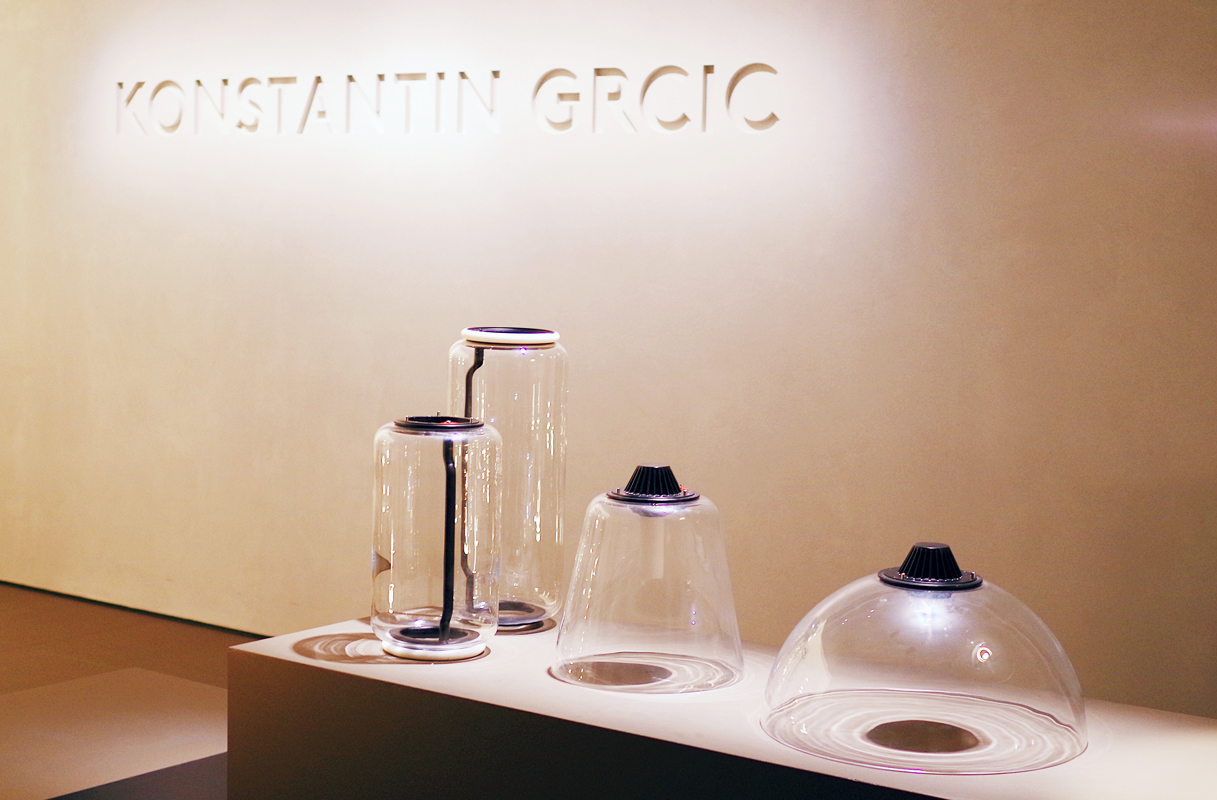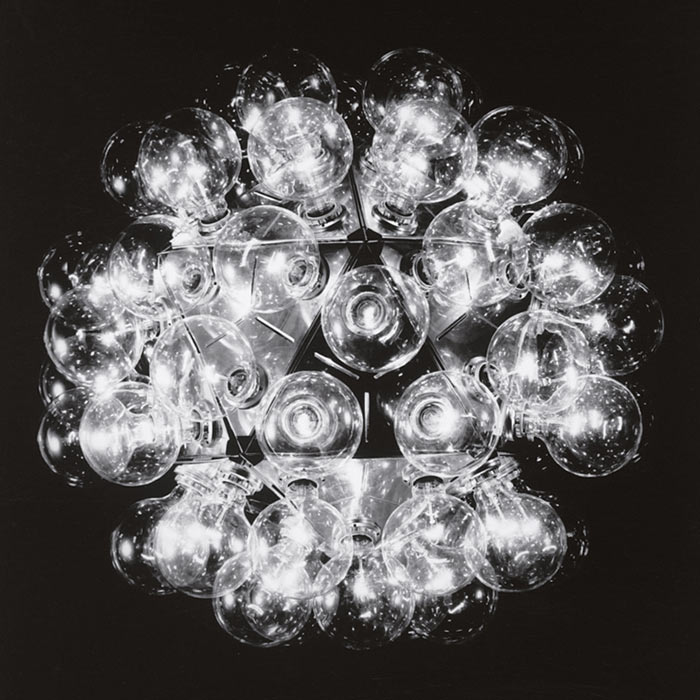Milan Design Week 2017: Konstantin Grcic’s “Noctambule” Lamp
From a “naive, stupid start” to a beautiful execution

by Kyle Raymond Fitzpatrick
Konstantin Grcic’s newest Flos lamp is a meditation on opposites. When off, the glass structure appears invisible, blending into the background. In turning the light on, it becomes a glowing line powered by multiple cinched LED waists. The lamp’s name “Noctambule” reflects this balance—it means “the night owl” in French. Grcic clarifies the duality of this word, “It can also be ‘the reveler,’ these creatures that kind of come to life at night.” The creation debuted at Milan Design Week 2017’s Salone del Mobile Euroluce display. The clear execution that we witnessed wasn’t actually part of Grcic’s original vision. He wanted to create a lit stone monolith. “My first idea was a column—and it wasn’t transparent,” he says. “That’s how we started.”

This change reflects the process of materializing ideas by investigating the feasibility of creation. In this case, much of the process had to do with designing for functionality aided by more malleable lighting like LED. “There’s a big leap from a really naive, stupid start to you finding the key,” he says. “The key was transparency and the idea of glass—and that set the whole thing off. From here, the column’s construction created a grammar of parts that enabled a mix-and-match allowance for owners to create the original large floating light or smaller, table friendly lanterns. “Playing around with the elements led to the different typologies that we were able to build,” Grcic says.

“Noctambule” is reflective of the nature of design considering most creations fulfill their intended design while offering playful versatility. For example: Grcic’s recent Soft Props couch with Cassina, which was also shown at this Milan Design Week. The piece has lived a similar (albeit young) life. The couch uses subway-inspired railings to contain gushy, squishy cushions fit for a living room. It’s displayed as such but was never intended to be for fixed comfort: it was more utilitarian and for public space. “There’s another version of it where there are no loose cushions and it’s just the ottoman and the railing,” Grcic says. He continues, “I strongly see it like that in a public space, where it’s more of a bench and the railing is something you sit on. You sit the other way and it feels like a protection from the back, like a bumper. I think it has a hard side to it but the hard railing also allows it to change.”
Good design has an open side to it
Yet, design is made to be remixed, leaving a designer’s hands to be toyed with and owned by people. Soft Props and “Noctambule” embody this. “Good design has an open side to it,” he says. “It makes a proposal of something and invites people to engage with it in that way that they feel in charge of it, in control of it. They do with it what they want.” Grcic undoubtedly looks forward to seeing how the “Noctambule” will be played with, seeking to be used however the owner pleases. Such is the nature of a well designed item. “Products have to live a life—and their life,” Grcic says. “People that live with these things have to make it their object—not the one that dictates them.”
Images by Kyle Raymond Fitzpatrick











